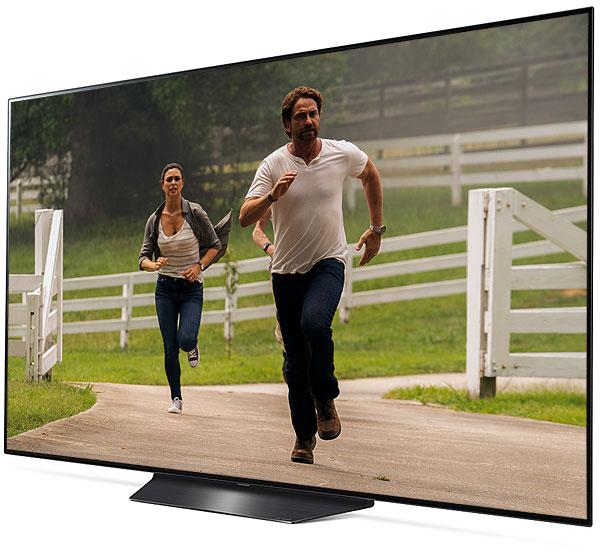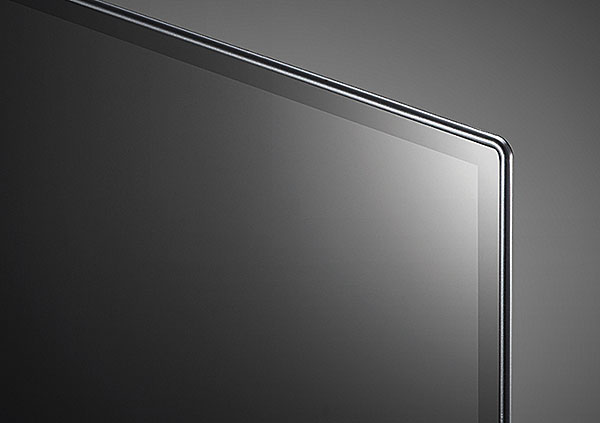LG OLED55BX 4K HDR OLED TV review

 Steve May reckons this 55in entry-level OLED TV is a belting buy for canny AV enthusiasts
Steve May reckons this 55in entry-level OLED TV is a belting buy for canny AV enthusiasts
LG's BX Series OLED TV is a tempting gateway to the joys of the screen technology. Positioned below the brand's headline-hogging CX range, it looks much the same, yet comes in at a significantly lower price thanks to a step-down image processor and a few specification compromises. Is the price saving worth such sacrifices? I think so.
LG's BX Series OLED TV is a tempting gateway to the joys of the screen technology. Positioned below the brand's headline-hogging CX range, it looks much the same, yet comes in at a significantly lower price thanks to a step-down image processor and a few specification compromises. Is the price saving worth such sacrifices? I think so.
Behind the glass is a third-generation Alpha 7 processor. Seasoned telly addicts will know that the BX's stablemates use LG's more powerful Alpha 9 silicon. This kind of chip differential positioning isn't unusual – and follows what we saw on last season's entry-level B9 – but it's the headline difference here.
This set also isn't quite the gaming behemoth the CX model is when it comes to connectivity. But for home cinema fans worried about their wallet, this could well be the best-value OLED screen you can buy right now.
Just The Two Of Us
The BX comes in two guises, the 55in model auditioned here and a companion 65in model. There's no ultra-tempting 48in variant for compact movie dens.
Its design is stylish and far from cut-price. Viewed side-on it looks as slim as sheet ice (at least until you hit the electronic backpack) and the bezel is predictably slim. The screen perches on a matching, centralised pedestal, which should suit all TV stands.
Of the four HDMI inputs provided, '3' and '4' are v2.1 and support 4K/120Hz (40Gbps, 10-bit, 4:4:4), meaning they're more than capable of partnering a PlayStation 5 or Xbox Series X. Unlike the pricier CX models, however, the remaining two HDMIs are vanilla-flavoured 4K/60p ports. Input lag (recorded with 1080/60 content) is a lean 14.6ms.
Additional gaming embellishments include Nvidia G-Sync compatibility, VRR, ALLM and FreeSync Premium. For non-joystick junkies, that's just confusing jargon, but it's worth pointing out that many OLED models from rival manufacturers costing considerably more offer considerably less in terms of connection support.

Providing control is LG's cursor-based Magic Remote. This Bluetooth wand is distinguished by a thumbwheel controller and dedicated buttons for Netflix, Prime Video and Rakuten. It can take a little while to get used to, but less tricksy is LG's overall UI. This is the last year we're going to see the WebOS system looking like this, with horizontal launcher bars. Change was probably inevitable, given just how feature-rich the platform is, so enjoy it while you can.
WebOS here is in the AI-upgraded guise, and comes with a decent number of streaming services, including Now TV, Disney+, Apple TV, Sky Store, Britbox, Twitch and YouTube. But as we've seen with other LG flatscreens of late, there's no Freeview Play. So that means many catch-up apps are AWOL, although iPlayer is on-board.
Simple Silicon
LG's Alpha 7 processor doesn't quite compete with the Alpha 9 in absolute picture quality terms, but runs it close. Imagery on this budget BX is consistently enjoyable, and gets the basics more than right.
The set turns in a perfectly fine HDR performance, albeit not as inherently punchy as some other OLEDs. Peak brightness was measured at just over 600 nits when displaying smaller specular highlights, although I did notice that intensity drops with larger swathes of HDR brightness. Outside of test and measurement, this isn't likely to be an issue; HDR is most effective when portraying transient highlights and sparkling reflections.
Significantly, the BX's near-black performance is highly impressive. The screen is able to present detail and texture with out-of-the box ease. Colour handling is also admirable, with subjectively no obvious deficiencies. Despite the un-glam image processor, I didn't find colour banding, for instance, an issue with real-world content.
 |
Home Cinema Choice #351 is on sale now, featuring: Samsung S95D flagship OLED TV; Ascendo loudspeakers; Pioneer VSA-LX805 AV receiver; UST projector roundup; 2024’s summer movies; Conan 4K; and more
|

















































